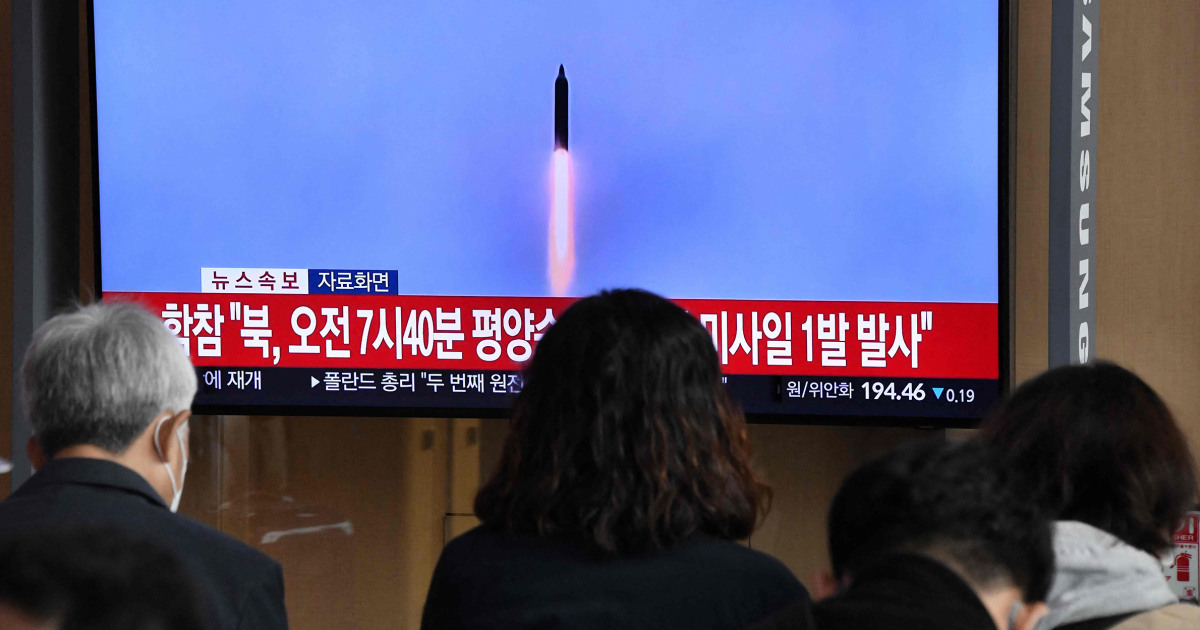SEOUL, South Korea — North Korea fired three more missiles Thursday, including a suspected intercontinental ballistic missile, the South Korean and Japanese governments said, continuing to raise tensions a day after it launched a record of at least 23 missiles in a single day.
Concerns that one of the missiles might fly over Japan prompted the government to activate its early warning system, urging residents in the northern prefectures of Miyagi, Yamagata and Niigata to take cover inside or underground. Officials later said that the missile did not fly over Japan and that it disappeared over the water.
North Korea has escalated its weapons tests and fiery rhetoric as the U.S. and South Korea continue large-scale joint military exercises this week. The tests are seen as an effort by North Korean leader Kim Jong Un to develop his regime’s nuclear arsenal, pressure the U.S. to ease crippling sanctions and gain international acceptance as a nuclear state.
The suspected long-range ballistic missile was fired toward the sea at 7:40 a.m. (6:40 p.m. Wednesday ET) from the Sunan area in Pyongyang, the North Korean capital, South Korea’s Joint Chiefs of Staff said. An hour later, North Korea fired two suspected short-range ballistic missiles toward the sea from the Gaechon area of South Pyongan province.
In a statement late Wednesday Washington time, the State Department condemned North Korea’s intercontinental ballistic missile launch, calling it a clear violation of multiple U.N. Security Council resolutions. It said the launch underscored the need for all countries to fully implement those resolutions, “which are intended to prohibit (North Korea) from acquiring the technologies and materials needed to carry out these destabilizing tests.”
It said U.S. commitments to the defense of South Korea and Japan remained “ironclad.”
The South Korean military said that it had strengthened surveillance and monitoring in close cooperation with the U.S. and that it was maintaining military readiness for all situations.
Japanese Defense Minister Yasukazu Hamada said one of the missiles reached an altitude of 1,242 miles and flew 466 miles, landing in waters west of Japan. It may have been a mid- to long-range missile, he said.
South Korea’s Joint Chiefs of Staff provided similar numbers, saying the missile reached an altitude of 1,193 miles and flew 472 miles at about Mach 5.
North Korea last tested an intercontinental ballistic missile in March, its first such test since 2017. U.S. and South Korean officials say the country is also preparing for its seventh nuclear test, which would also be the first since 2017.
Early last month, North Korea sent an intermediate-range ballistic missile soaring over Japan in its longest-ever weapons test. The nuclear-capable missile has the range to reach the U.S. Pacific territory of Guam.
Tensions had already risen Wednesday when South Korea responded to North Korea’s barrage by firing three air-to-surface missiles of its own. The two countries’ missiles landed in international waters across their disputed sea border but not on their actual territory.
South Korea is in a national mourning period after the Halloween crowd crush in Seoul that killed 156 people. President Yoon Suk Yeol’s government has been criticized for the police failure to prevent the tragedy.
In addition to improving its military capabilities, the missile tests also serve the North’s political purposes, said Leif-Eric Easley, an associate professor of international studies at Ewha Womans University in Seoul.
“From Pyongyang’s perspective, the Yoon administration’s unpopularity appears as an opportunity to coerce the South Korean public into opposing security cooperation with Washington,” he said by email. “Meanwhile, firing over Japan can be interpreted as a threat not to be involved with the security of the Korean Peninsula.”
Share your story or advertise with us: Whatsapp: +2347068606071 Email: info@newspotng.com















